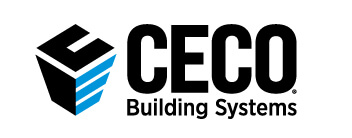Building Codes to Watch in 2021
Posted on July 16, 2020 by Mark DetwilerMost people involved in the design and construction of buildings recognize that all buildings must meet the provisions of applicable building codes. However, not everyone understands where the code provisions come from or how they are developed. In fact, the codes are the result of a very comprehensive, ongoing process that involves many organizations and people around the country. This process may produce minor code revisions, or major updates, that directly affect the design and construction of a variety of building types including metal building systems.
What code are we talking about? The International Building Code (IBC) is the most commonly used building code across the United States. The IBC is prepared by a collaborative group known as the International Code Council (ICC) who engage thousands of code officials, design professionals, construction contractors, and material suppliers in an ongoing code review and updating process based on a three-year cycle. Different committees address specific concerns, analyze and assess the issues, and prepare new code language or procedures. The committees then offer these up for review, revision, public comment, and (hopefully) ultimate approval by the full ICC for inclusion in the next code update. It is then up to local jurisdictions (typically states) to decide whether they will formally and legally adopt the latest, revised version of the IBC and other codes (i.e. Energy Code, Residential Code, etc.).
In many cases, the ICC recognizes that there are professional specialty groups who have developed very specific standards commonly used throughout the construction industry. Instead of trying to duplicate those efforts, it is routine for the IBC to reference such a standard and adopt it into the code. There is a full list of such referenced standards at the end of the IBC (and other codes) identified by their formal name and number and the group that prepares and publishes them. When such a standard is duly incorporated by reference, it is in fact part of the code as well.
By way of example, one can look at a specific code provision related to the structural design of buildings and how it impacts metal building systems. Chapter 16 of the IBC addresses Structural Design requirements for buildings and Section 1609 in particular is focused on Wind Loads. One of the first paragraphs of this section (1609.1.1) states “Wind loads on every building or structure shall be determined in accordance with Chapters 26 to 30 of ASCE 7.” This is a case where the code defers to a recognized outside source. The American Society of Civil Engineers (ASCE) publishes ASCE 7 which is titled: “Minimum Design Loads for Buildings and Other Structures”. This published standard is developed by a committee of civil/ structural engineers and others from around the United States, Canada, and elsewhere. Chapters 26 to 30 of ASCE 7 address wind loading on buildings, hence the specific reference in IBC1609.
Currently, there is a change being proposed by the ASCE 7 Wind Load Subcommittee for voting (balloting) by the full committee for inclusion in the next edition due to be published in 2022. If adopted, it would change the definition of “effective wind area” when calculating wind load on structural members in a building. By allowing a larger effective wind area, the change would lead to a decrease in the applied pressure on roof and wall components of buildings. This would be particularly relevant to metal buildings since the change would recognize that a low-rise building with long, continuous members is subjected to different wind load conditions compared to a mid-rise or high-rise building. Specifically, it would allow wind loads to be reduced in lapped purlins and girts, and in roof and wall panels by accounting for their ability to distribute the effects of localized wind gust pressures over a wide area. Such a change could mean a more efficient structural design that could save on the weight and cost of structural members. This provision of ASCE 7 has received some favorable reception by those able to vote on it so far, so it may indeed become reality in just a few years.
At the same time, another effort is also underway to streamline the process of calculating wind pressure. Currently, ASCE 7 identifies two methods to do that known as the Directional Procedure and the Envelope Procedure. Dr. Greg Kopp of Western University in Ontario is leading an effort to unify these two methods. This is an enormous task that some parties greatly desire to see finished in time for the 2022 ASCE 7 edition. However, it likely will require further development since Dr. Kopp has already discovered areas where both methods show a lack of correlation with wind tunnel data housed in a National Institute of Standards and Technology (NIST) database. He is working closely with a group of long-time wind researchers to develop an approach that appropriately addresses both methods.
It is the work of many people, including committee members who are part of the Ceco team, which allows relevant issues like these to be properly addressed, researched, vetted, and incorporated into the codes and standards that promote the health, safety, and welfare of the general public. To find out more about how codes are used to design metal buildings, contact your local Ceco representative.


